1. Step 1
1.1. Identify terms and cues
1.2. New terms
1.2.1. Throbbing
1.2.1.1. Pain that is attended with rthymating beating sensation
1.2.2. GP
1.2.2.1. General Physician
1.2.3. limp
1.2.3.1. Inability to walk properly
1.2.4. sore
1.2.4.1. Painful aking place (skin lesion)
1.3. cues
1.3.1. painful right knee in the past three months
1.3.2. Deep throbbing pain in the right knee
1.3.3. limping
1.3.4. Stopped playing tennis
1.3.5. Trouble gettin g up in the lounge chair
1.3.6. Small sore in his left leg (that is getting begger)
1.3.7. Playing tennis two moinths ago, limited to short walking
1.3.8. Usually goes with his partner to sunbathe
1.3.9. Came to the Dr. for two complaints
1.3.10. Previous doctor visit (the sore)
1.4. 10 minutes
2. Step 4
2.1. Hypothesis organization (tentative solution)
2.1.1. Hypothesis generation (brainstorming)
2.1.1.1. Infection
2.1.1.1.1. Bacteria infection
2.1.1.1.2. Leishmania
2.1.1.1.3. Abcsess
2.1.1.2. Trauma/mechanical
2.1.1.2.1. Osteoarhritis
2.1.1.2.2. Stress fracture
2.1.1.2.3. Muscle strains
2.1.1.2.4. Tendon injury
2.1.1.2.5. Ligament injury
2.1.1.3. Neoplastic
2.1.1.3.1. Skin cancer
2.2. 20 minutes
3. Step 5
3.1. Formulate learning objectives
3.1.1. What causes the presented symptoms
3.1.2. Skin cancer: Causes and Risk Factors (in relation to symptoms)
3.1.3. Osteoarthritis: Causes and Risk Factors (in relation to symptoms)
3.1.4. Underlying cause of the throbbing pain
3.1.5. Chronic infection in the skin
3.2. 10 minutes
4. Step 2
4.1. Problem formulation (put it in a senates)
4.1.1. An adult male complaining of a throbbing pain in his right knee (3 months ago) associated with limping. And sore on his left leg that is getting bigger
4.2. 10 minutes
5. Step 3
5.1. Hypothesis generation (brainstorming)
5.1.1. Vascular
5.1.1.1. Throbbing (vessle related)
5.1.1.2. Needs more blood (ischemia)
5.1.1.3. Partial occlusion of vessle
5.1.1.3.1. Cause less blood supply
5.1.1.4. varicose vein
5.1.1.5. Hematoma
5.1.2. Idiopathic
5.1.3. Infection
5.1.3.1. Bacteria infection
5.1.3.1.1. Osteomyelitis
5.1.3.2. Leishmania
5.1.3.3. Abcsess
5.1.4. Autoimmune
5.1.4.1. Rhematoid arthritis
5.1.4.2. SLE
5.1.4.3. Allergy
5.1.5. Metabolic
5.1.5.1. Osteoporosis
5.1.5.2. Osteopetrosis
5.1.5.3. Decreases minerals in the synovial fluid
5.1.5.4. Increased uric acid accumulation
5.1.5.5. Psororis (affects bones and skin)
5.1.6. Trauma/mechanical
5.1.6.1. Osteoarhritis
5.1.6.1.1. Increased friction between knee joints due to decreases in menisci or synovial fluid
5.1.6.2. Stress fracture
5.1.6.3. Fall/injury
5.1.6.4. Muscle strains
5.1.6.5. Tendon injury
5.1.6.6. Mechanical stress --> Sore
5.1.7. Neoplastic
5.1.7.1. Parathyroid hyperplasia
5.1.7.2. Skin cancer
5.1.7.2.1. Related to the sun exposure
5.1.7.3. Osteosarcoma
5.1.7.4. Ewing's sarcoma
5.1.8. Congintal
